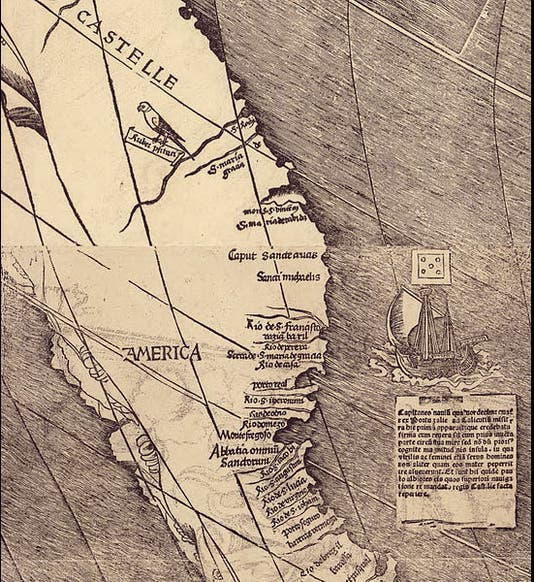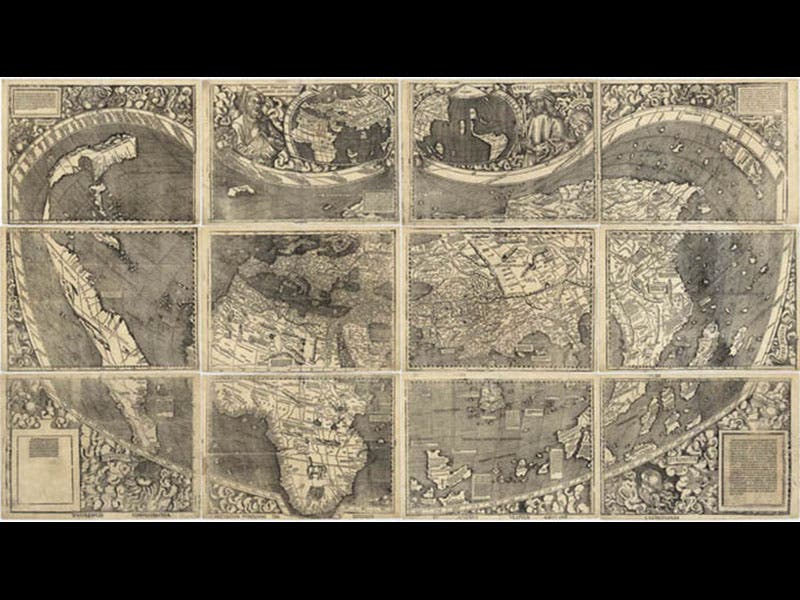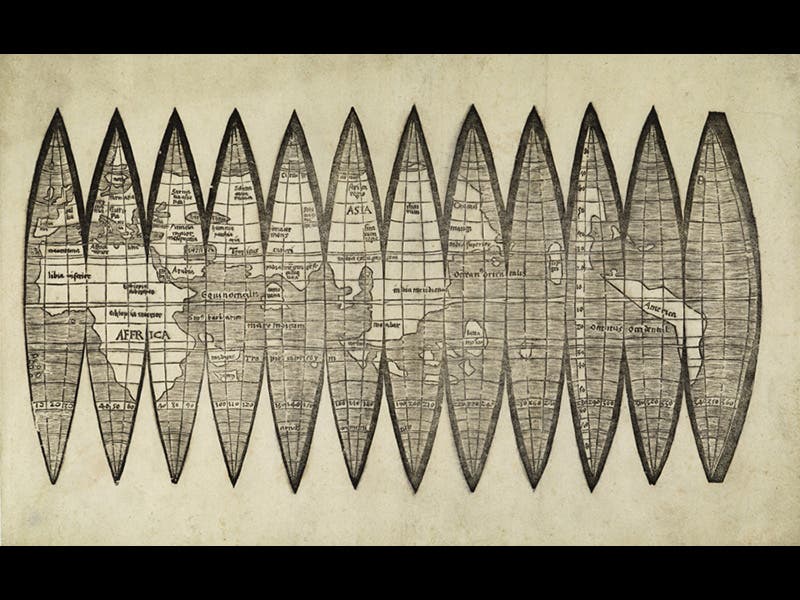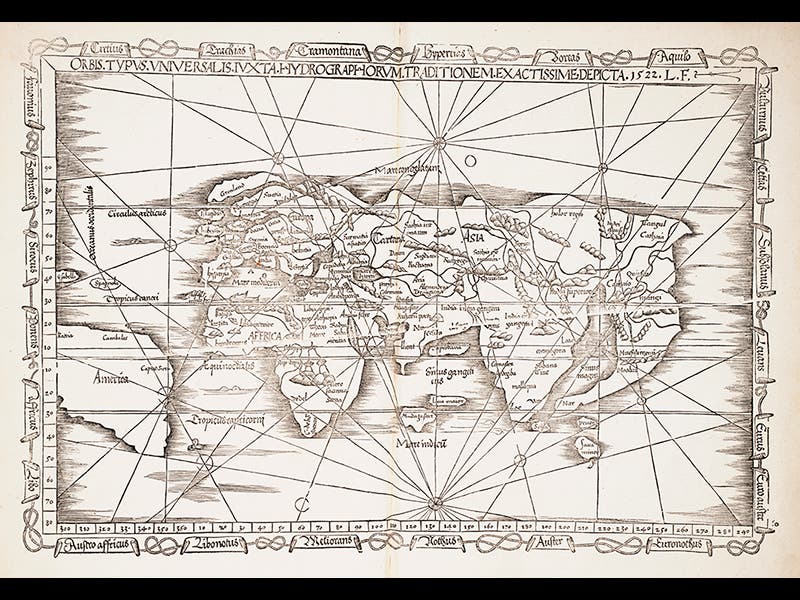Scientist of the Day - Martin Waldseemüller
Martin Waldseemüller, a German cartographer, died Mar. 16, 1520, at the age of about 50. He worked in the tiny town of Saint-Dié in Lorraine in northeastern France, along with several other cartographers; how this small community managed to inaugurate a cartographic revolution is not well understood. In 1507, Waldseemüller issued a large world map, so large that it was printed in 12 sections, and on the left edge of the map is a new continent, with a new name: “America” (see first image above; the complete map can be seen in the second image). Waldseemüller coined the term because he was an admirer of Amerigo Vespucci, whose Lettera on his four New World voyages had been a major inspiration for the map.
Only one copy of the map survives, and it was acquired in 2001 by the Library of Congress, where you can see it today (third image above). Waldseemüller also published a small globe in 1507 to accompany the large wall map; it was printed in the form of gores, which can be cut out and pasted on a sphere of the proper size to form a globe, and it also features the label “America” on the sliver of a new world. A sheet of 1507 gores is almost as scarce as the wall map; only three survive, and there is only one set in this country, at the James Ford Bell Library at the University of Minnesota (fourth image above).
In our Library, we have a 1525 edition of Ptolemy’s Geographia, which contains a reduced and updated version of the Waldseemüller world map (fifth image above).
Dr. William B. Ashworth, Jr., Consultant for the History of Science, Linda Hall Library and Associate Professor, Department of History, University of Missouri-Kansas City










